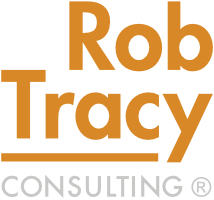On November 5, I released How to Fix a Factory, my first book. It shares some of the things I’ve learned during my decades-long career, focused on how to get a struggling organization back on the road to health and vitality. Writing it was a journey. Getting from an idea to a finished product took about 15 months of steady effort with a lot of ups and downs, and that required a pretty compelling ‘why.’
I needed to write this book because I want the manufacturing industry in North America to do more than survive. I want it to thrive. We know the automakers and large companies like Caterpillar and Boeing can take care of themselves. I’m interested in helping the thousands of smaller manufacturers that too often fly below the radar. I knew I had important information to share with these organizations because I’ve spent much of my career in factories that were struggling to survive. In most cases, we were able to work our way back into a healthy place, but sometimes we weren’t. Either way, I learned. My experience has taught me what approaches work and which ones don’t. Every factory will eventually stumble in some way. With this book, I hope to help guide the path to recovery.
Another reason for writing the book was to offer a different perspective about the role of Lean in manufacturing. Lean isn’t new anymore. Almost everyone is attempting to implement some parts of it, but the results are underwhelming. I’ve seen very few companies achieve breakthrough results, maybe less than five percent. It’s a horrible track record, and yet many plow forward as if Lean is the only game in town.
I believe in Lean principles, and I’ve personally led several organizations successfully through Lean implementation, but manufacturers can make great gains without a full-blown, both-feet-on-the-gas, implementation of Lean. In fact, I think that companies need to make sure that they have the fundamentals down pat before racing forward with Lean. If the fundamentals aren’t strong, Lean will reveal the issues very quickly, but that’s an unnecessarily painful way to drive improvements. In my book, I wanted to share a different perspective. One that suggests you build a strong and healthy base before you attempt Lean. When you have a solid and stable foundation, you’ll be ready to take the next steps toward excellence by applying Lean principles.
Thank you for going on this journey with me. I hope that you decided to read the book. If you do, I would love to hear your feedback. Please drop me a line.
P.S. I’ll be donating all the profits from my book to the Mike Rowe Works Foundation! Its mission is to help close the skills gap by challenging the stigmas and stereotypes that discourage people from pursuing millions of jobs in skilled labor.
